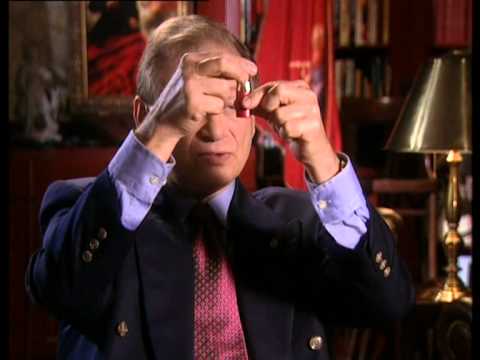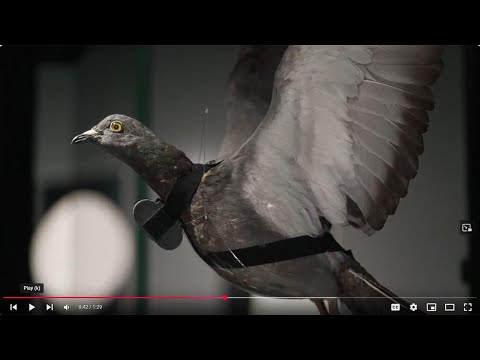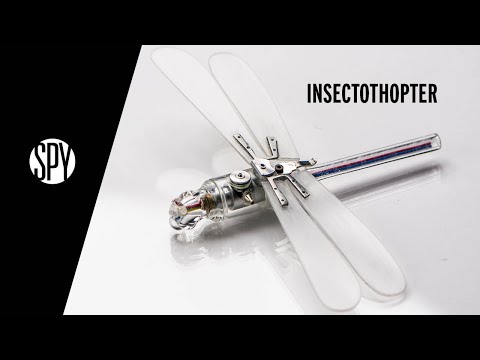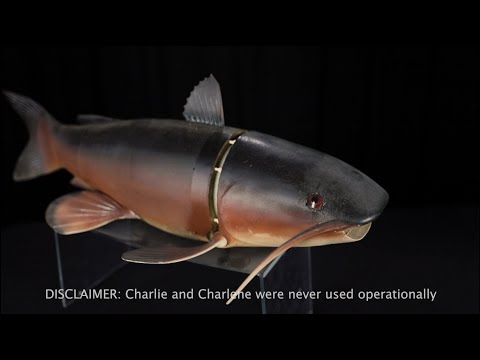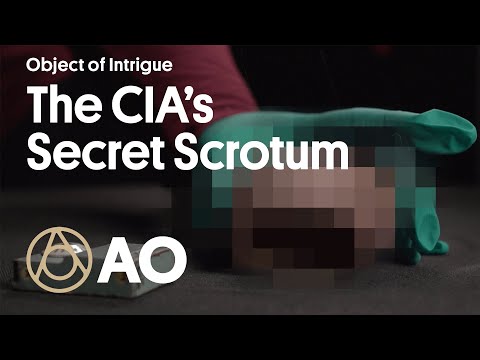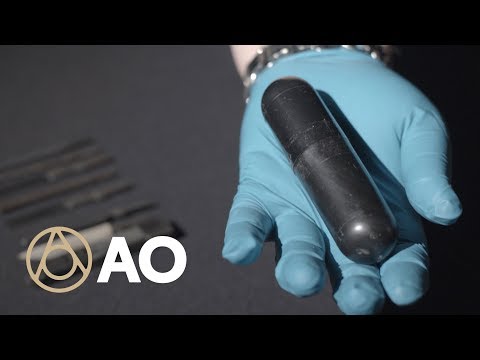Dashing, intelligent, and brave, Bond burst on the scene with fast cars and beautiful women. Fierce enough to take on any enemy, accomplished in hand-to-hand combat, and able to use every weapon created, he was ready for whatever came his way. But a spy’s clandestine activities also call for tactics known in the intelligence community as Tradecraft—clever disguises, surveillance, coded messages, and sneaking in and out of places undetected. Here is where it gets fascinating because Tradecraft went to a whole new level when our heroes were given gadgets. What would a Hollywood spy movie be without cool devices? And the more outlandish they are, the more we love them. Do spies really use cool gadgets like in Hollywood movies? Yes, they do! Obviously, intelligence agencies have only declassified a fraction of the many devices their agents have used throughout history. But here are 10 intriguing spy devices that we know of.
10 The Lipstick Pistol
You remember the scene—Helga Brandt and James Bond are traveling in a small plane. Helga applies a little lipstick and casually says, “I’m awfully sorry to leave you, but I have to get off.” Then, dropping her lipstick to release a disorientating gas, she parachutes out, leaving Bond trapped in a plane about to crash. Who would have suspected a little tube of lipstick of being a deadly weapon? And really, it’s a pretty good distraction. From Rita Hayworth to Claire Standish’s cleavage applicator in The Breakfast Club, men have always been beguiled by a woman applying lipstick. Unfortunately, if you were an enemy of the KGB in the 1960s, watching a woman put on her lipstick could also have been deadly because female KGB operatives were carrying 4.5mm single-shot “lipstick” pistols as weapons. No one knows how many men were assassinated after meeting up with these lipstick-pistol-packing KGB agents, but the International Spy Museum displays one confiscated from a KGB agent in the mid-1960s. These Soviet-issued lipstick pistols were known as the “Kiss of Death.”[1]
9 Shoe Heel Transmitters
What can you do with a shoe? If you’re agent Maxwell Smart, you can make a call. While this sitcom spy had a telephone in the heel of his shoe, in the world of espionage, you’d have a secret transmitter. During the ’60s and ’70s, the Romanian Secret Service worked with their postal service to intercept and place devices in the shoe heels of Western diplomats in Eastern Europe who mail-ordered their shoes from Western European stores. They also planted agents at hotels where they had access to the rooms of American diplomats. Once they gained access to their shoes, battery-powered microphones and transmitters were hidden in the heels. The transmitters functioned until their batteries died. This scheme enabled them to listen to meetings the diplomats attended until the bugs were finally discovered. When the meeting rooms were swept, the recording devices gave off a signal that the diplomats’ security staff kept picking up but couldn’t locate. Then they noticed the signal disappeared every time the diplomats left the room, and the devices were found.[2]
8 Pigeon Cameras
It’s not often you get to applaud pigeons, but these often misaligned birds have been awarded Medals of Honor for distinguished military service. When it comes to Spycraft, pigeons aren’t high-tech, but once they played a vital role in the gathering and exchanging information. Watch this video on YouTube In 1908, Dr. Julius Neubronner was granted a patent with the German Patent Office for the pigeon camera he developed. He initially sold aerial shots taken by pigeons as postcards. However, in WWI, these aerial photographers were used for a very different purpose. Cameras were strapped onto pigeons “serving” in the National Pigeon Service (Special Section) to pinpoint enemy locations, determine what weapons they had, and create topographical maps. They were also used to deliver messages and information when radio signals were weak or being intercepted, resulting in lives being saved. When flying into enemy fire, pigeons had a 95% success rate of finishing their mission. These brave birds were responsible for much of the vital information we obtained. Considered equal to the Congressional Medal of Honor or the Victoria Cross, the Dickin Medal of Honor was created to honor animals who aided the war efforts. Of the 54 Medals awarded, 32 went to pigeons, including The Scotch Lass, who continued to fly injured to deliver vital micro-photographs to allied troops in the Netherlands.[3]
7 Bulletproof Headphones
Picture a small room in an abandoned building or the back of an unmarked van. Inside, an operative wearing headphones listens to conversations, sending and receiving information and triangulating locations. It all seems pretty routine unless something goes horribly wrong, and it often does. That’s just what happened in 2009 in Afghanistan when a CIA officer found himself trapped in an alley with an armed gunman. The agent was shot twice with a rifle. A shot hit each of his headphones on either side, protecting him from receiving two bullets to the head. So, maybe they weren’t exactly bulletproof…a few inches to the right or left, and the agent wouldn’t have survived. But maybe the government can work on perfecting the design.[4]
6 Dog Doo Transmitter
Known formally as T-1151, this important device was more often called the Doo Radio Transmitter. Designed to resemble dog, tiger, or monkey poop, it was used in Vietnam to track the movement of enemy troops and supply caravans and aid in planning military strikes along the Ho Chi Minh Trail. Both the military and CIA monitored their transmissions. More often than not, people avoid touching poop and seldom think of it as a secret weapon, so they were rarely discovered.[5]
5 Insectothoper
Spy agencies need to be good at bugging conversations. The CIA is no exception, so in the 1970s, they created the Insectothoper. This mini robot was shaped like a dragonfly with a little engine and a tiny microphone inside its head. It could fly 650 feet for about 30 seconds, just enough to land next to someone whose conversation they wanted to hear. It worked well indoors, but outside they discovered it was too light to handle even slight breezes, which prevented it from being controlled. The idea of using bugs to bug people appealed to the Russians as well. In 1976, the KGB unsuccessfully attempted to copy the insectothoper—or did they? The CIA now successfully deploys remote-controlled insectothopers much smaller than the original dragonfly.[6]
4 A Fish Called Charlie
In the 1990s, the CIA’s Office of Advanced Technologies developed Charlie. Like Starkist’s Charlie the Tuna, Charlie was a fish. But this Charlie was actually a remote-controlled robotic catfish. Like all good clandestine spy gadgets, Charlie had a microphone inside him and was so realistic he could be mistaken for an actual catfish. He was one of the CIA’s early attempts at creating unmanned underwater vehicles for intelligence purposes. Charlie was supposedly for collecting water samples near nuclear power plants. The idea has since spawned other robotic fish used by universities for testing water.[7] Watch this video on YouTube
3 Scrotum Concealment
In the world of Spycraft, it’s often necessary to think creatively when it comes to concealment. This gadget proves just how creative the CIA can be. A downed fighter pilot who had to eject needed a way of communicating his location in order to be rescued. But where could he hide a mini radio that wouldn’t be located if he was captured and searched? Watch this video on YouTube The CIA’s department of Science, Technology, and Weapons found a place! Called the Scrotum Concealment, it was designed to look like, well…a scrotum. This device would be glued into place until needed and then yanked off. Inside was a mini radio that pilots could use to call for help. For mortifying reasons, the scrotum device was never approved for use.[8]
2 Bulgarian Umbrella
In For Your Eyes Only, Q shows Bond what looks like a regular umbrella. When activated, spikes come out as it closes over a person’s head, causing death. For Georgi Markov, death came on September 7, 1978, from a Bulgarian Umbrella Gun. A Bulgarian dissident writer who defected to Italy in 1968, Markov ended up in London working for the BBC World Service. For his crimes, Bulgaria’s communist dictator, Todor Zhivkov, ordered him killed. Markov was walking in broad daylight when he felt a sharp stinging pain in his leg. Turning, he saw a man behind him with an umbrella quickly get in a taxi and disappear. Markov’s death was neither quick nor pleasant. Performed at Wandsworth Public Mortuary, the autopsy revealed his lungs were filled with fluid, his liver damaged, and his blood poisoned. In addition, his intestines, heart, and other organs had hemorrhaged, and his white blood cell count was exceedingly high. A puncture wound in his right thigh had a hollowed-out metal pellet inside. Forensic investigations revealed the wound did not come from a standard gun. His symptoms added to the fact that the Soviet Union was experimenting with Ricin led officials to determine that Markov had been killed by this caster bean derivative. Scotland Yard believed the assassin used a seemingly innocuous umbrella, altered to inject poisonous Ricin pellets by pulling the umbrella’s trigger. Ricin is a cruel killer. In addition to the symptoms above, it causes fever, difficulty breathing, vomiting, and diarrhea. It takes days to die. Markov never saw a threat coming and never stood a chance. Eventually, KGB defectors Oleg Kalugin and Oleg Gordievsky corroborated that the KGB gave the weapon to Bulgarian Secret Service agent Francesco Gullino to carry out the assassination.[9] An entire room filled with Umbrella Guns was discovered in Bulgaria in 1991.
1 The Rectal Tool Kit
What spy wants to be without a good tool kit? The world of espionage is a deadly one, where being captured can mean not only death and torture but also the possibility of information getting into enemy hands. Because of this, the CIA’s Technical Division created the Rectal Tool Kit. This sealed, oblong-shaped case contained numerous items that could be utilized for escaping, such as lock picks, drill bits, knives, and miniature saws. It was designed so agents could put it someplace no one expected anyone to look if they were searched. The Rectal Tool Kit was issued to agents by the CIA in the 1960s.[10] Watch this video on YouTube These are just some of the gadgets created for secret agents. There are many others—Caltrops, the KGB Model F-21 Coat Button Camera, the list goes on and on. The Deutsches Spionagemuseum in Berlin, KGB Espionage Museum and Spyscape in NYC, and the International Spy Museum in Washington DC are filled with gadgets used by spies to do clandestine surveillance, defend themselves, and eliminate enemies when necessary. But with tens of thousands of gadgets remaining classified, we may never know just how many cool gadgets exist in the world of Spycraft.
